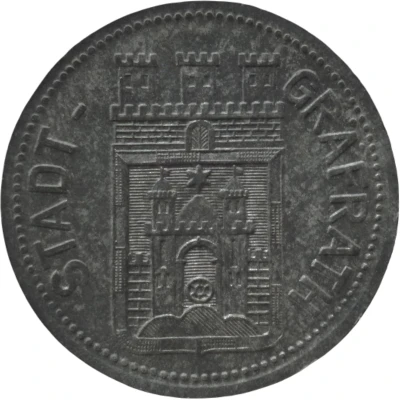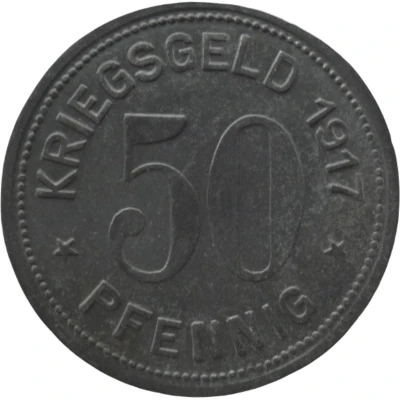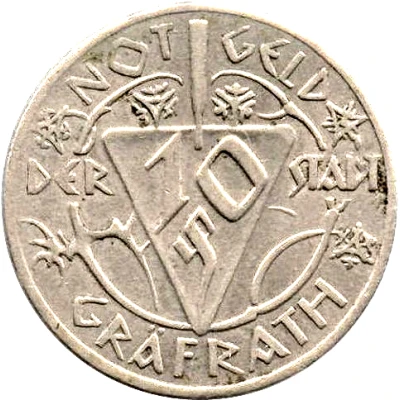


© Willem63 (CC BY-NC-SA)
50 Pfennigs - Gräfrath
1917 year| Zinc | 2.6 g | 24 mm |
| Issuer | City of Gräfrath (Prussian province of Rhine) |
|---|---|
| Emperor | William II (Wilhelm II) (1888-1918) |
| Type | Standard circulation coin |
| Year | 1917 |
| Value | 50 Pfennigs (50 Pfennige) (0.50) |
| Currency | Mark (1914-1924) |
| Composition | Zinc |
| Weight | 2.6 g |
| Diameter | 24 mm |
| Thickness | 0.9 mm |
| Shape | Round |
| Technique | Milled |
| Orientation | Medal alignment ↑↑ |
| Demonetized | Yes |
| Updated | 2024-10-04 |
| Numista | N#42739 |
|---|---|
| Rarity index | 65% |
Reverse
Pearl rim, legend surrounding denomination centered
Script: Latin
Lettering:
KREIGSGELD 1917
50
★ PFENNIG ★
Edge
Plain
Comment
Issuing body: [Stadt, Rheinprovinz].Interesting fact
One interesting fact about the 50 Pfennigs - Gräfrath 1917 coin is that it was issued during a time of economic turmoil in Germany. The country was facing hyperinflation, and the value of the German mark was rapidly decreasing. In response, the government introduced a new currency, the Rentenmark, which was pegged to gold and was intended to stabilize the economy. The 50 Pfennigs - Gräfrath 1917 coin was part of this effort, as it was made of zinc, a cheaper metal than the traditional silver or gold, and was designed to be used as a substitute for the rapidly devaluing paper marks. Despite its humble composition, the coin remains a fascinating piece of history, offering a glimpse into a tumultuous period in Germany's economic past.
Price
| Date | Mintage | VG | F | VF | XF | AU | UNC |
|---|---|---|---|---|---|---|---|
| 1917 | 61510 | - | - | - | - | - | - |
Values in the table are based on evaluations by sales realized on Internet platforms. They serve as an indication only for 50 Pfennigs - Gräfrath 1917 coin.



